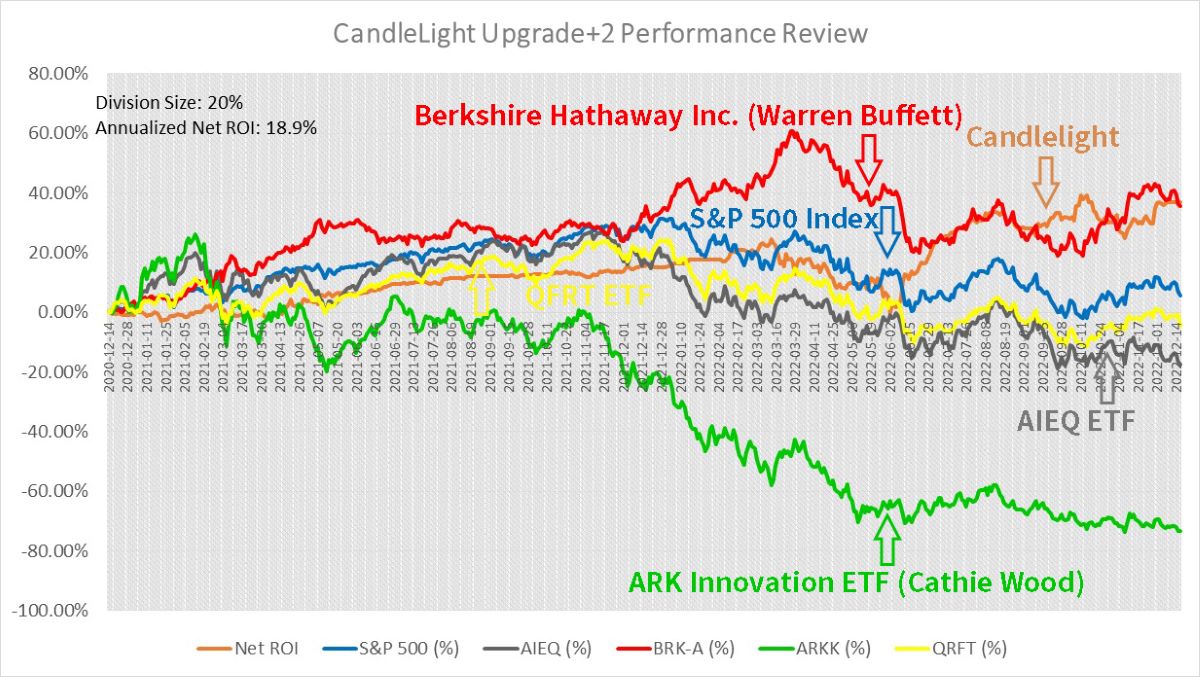Unlock the Secrets of Quantitative Trading: From Math to Market Mastery
|
|
Math and market mastery, who knew it was a winning combination? Well, Jim
Simons did and he became a billionaire by using quantitative trading! Get
ready to crack the code on the secrets of quant trading, from understanding
the mathematical models to becoming the next ‘Quant King’ (or Queen) of Wall
Street.
Quantitative trading, also known as quant trading, is a
systematic approach to investing that uses statistical and mathematical
models to analyze market data and execute trades. Unlike qualitative
analysis that assesses opportunities based on subjective criteria, quant
trading relies solely on data and models. It has become popular among
financial institutions and hedge funds due to the high computing demands of
the method, but recent advancements in technology have made it possible for
individual traders to also engage in quant trading.
Quant trading
works by evaluating the probability of a specific outcome using data-based
strategies. Historical data, mathematical models, and programming are key
components of the process. Traders may incorporate variables such as price
and volume into their mathematical models and may also explore alternative
datasets to discover present and potential trends.
Quant traders
create automated software that is designed with mathematical models to
identify patterns in historical data and make informed trading decisions.
They may modify existing strategies or create their own. A background in
mathematics, engineering, or financial modeling, as well as experience in
computer programming and working with data feeds and APIs, is preferred for
those seeking to work as quant traders.
Quantitative trading offers
several advantages, including the ability to evaluate a wide range of
markets using infinite data points, reduced bias in decision-making due to
the absence of emotions, and increased efficiency with automated or
semi-automated systems. However, quant trading also has its disadvantages,
including the complexity of the method and the potential for models to be
incorrect.
For example, after months and months forward testing,
Candlelight’s Growth Rate is neck and neck with Buffett’s performance,
decisions 100% made by machines, details:
Two Years, 100+ Sets of Testing
Results Confirm: Machines Can Beat Human Aces in Stock Market!

Quantitative stock trading is widely regarded as the next big thing in the
trading world. This method of analysis has several advantages that make it a
top choice for traders.
One of the biggest advantages of quantitative
trading is scalability. Unlike traditional trading that uses only several
analytical tools, quantitative trading can use an unlimited number of
strategies and inputs, thanks to its use of high-performance computing. This
means that even retail investors can use quantitative analysis to make
informed investment decisions.
Quantitative trading also offers
unlimited opportunities for diversification. This is because quantitative
analysis can be used on any market, making it a suitable choice for traders
who want to reduce risk by diversifying their portfolios. Additionally, the
automated execution mechanism of quantitative trading allows traders to
simultaneously operate multiple strategies.
Another benefit of
quantitative trading is its accuracy. With statistical arbitrage, traders
can rely on highly accurate data to make informed decisions. The use of
algorithms and computers enables traders to make fast, precise decisions,
which is especially important for high-frequency trading.
Quantitative trading is particularly useful for traders who want to
diversify their portfolios, test various trading strategies, or operate in
high-risk markets like cryptocurrencies. To make the most of quantitative
trading, it is essential to have a deep understanding of market conditions,
historical data, and available analysis methods.
Quantitative trading
works by using mathematical analysis to create projection models that can be
used to make informed trading decisions. To develop and configure the
software, traders need to have programming skills, using languages such as
C++, C#, MATLAB, R, Python, and VBA, etc.
In quantitative trading, a
particular time interval is selected, and data is gathered and analyzed
using algorithmic methods. This analysis is then used to make trading
decisions based on the results. For example, if a share price rose from $12
at the opening of trading to $10.45 at noon, $14.78 at 12 PM, and fell to
$9.35 after the close of intraday positions, a quantitative trader could
analyze various parameters such as current time, current bid-ask prices,
opening price, high/low price, current price direction, and MACD readings to
make informed trading decisions.
There are many aces in quantitative
trading area, one of the most famous masters is Jim Simons. He is a legend,
known as the “Quant King”, and “The Man Who Solved the Market”, he is the
founder of Renaissance Technologies and the Medallion Fund.
James
Harris Simons is an American mathematician, hedge fund manager, and
philanthropist who is best known as the founder of Renaissance Technologies,
a quantitative hedge fund. With his remarkable success as an investor and
hedge fund manager, Simons is widely considered as the “greatest investor on
Wall Street” and “the most successful hedge fund manager of all time.”
Simons was born on April 25, 1938, in Brookline, Massachusetts. He
received a Bachelor’s degree in Mathematics from MIT in 1958 and a PhD in
Mathematics from UC Berkeley in 1961 at the age of 23. Throughout his
academic and scientific career, Simons focused on the geometry and topology
of manifolds, leading to numerous breakthroughs and advancements in the
field. He was awarded the AMS Oswald Veblen Prize in Geometry in 1976 and
was elected to the National Academy of Sciences of the USA in 2014.
Simons’ investment career began with the creation of Renaissance
Technologies, a quantitative hedge fund that employs mathematical models and
algorithms to analyze and execute trades. The main fund, Medallion, has been
closed to outside investors since its inception in 1988 and has earned over
$100 billion in trading profits, translating to an average gross annual
return of 66.1% or a net annual return of 39.1%. In addition to Renaissance,
Simons founded Math for America, a non-profit organization aimed at
improving mathematics education in U.S. public schools.
Simons is
also known for his philanthropy, particularly in supporting research in
mathematics and fundamental sciences. He established the Simons Foundation
with his wife and has been a trustee of the Simons Laufer Mathematical
Sciences Institute at UC Berkeley since 1999. In 2016, the International
Astronomical Union named asteroid 6618 Jimsimons after him in honor of his
contributions to mathematics and philanthropy.
Quantitative trading is
a cutting-edge method of investing that uses mathematical models and data
analysis to make informed trades. Although it can be complex and
challenging, it offers many advantages, including scalability,
diversification, and accuracy. And if you happen to become a legendary quant
trader like Jim Simons, you may even have an asteroid named after you! But
remember, before embarking on your quant trading journey, it’s crucial to
have a deep understanding of market conditions and a solid background in
mathematics and computer programming. Happy trading!
PS. We are doing
Quantitative Trading based on Machine Learning AI technologies, please take
a look at our experiment records:
Two Years, 100+ Sets of Testing Results Confirm: Machines Can Beat Human
Aces in Stock Market! |


|

Free Tutorial
Share
|
|
|
|